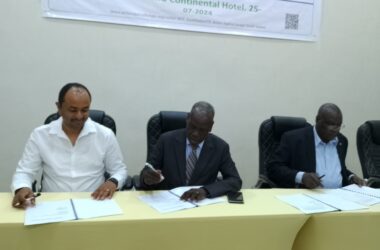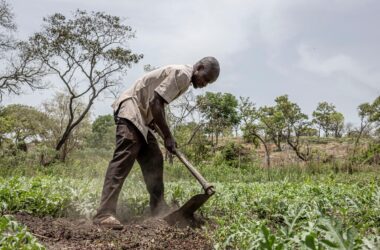By Bida Elly David
The minister of Cabinet Affairs said they have configured confusion and misunderstanding among peace parties concerning the lifespan of the R-ARCSS in relation to the extended period noting that the doubts are underway for clarification.
The official transitional period for the Reconstituted Transitional Government of National Unity (R-TGONU) lifespan elapses tomorrow 22 February 2023 that will now leave the interim unity government to breathe with the extended roadmap the parties signed in August last year.
The First Vice President Dr Riek Machar during the signing of the extended peace roadmap called the move a way to avoid “the crash of the nation” in February 2023, when elections were supposed to be held.
The 24-month-long extension begins in February 2023 and ends in February 2025. And elections are planned for December 2024 according to the new timeline.
Dr Machar said the parties found that about 70 per cent of the deal has not been implemented.
Speaking to the media at the ministry of Cabinet Affairs yesterday, Dr Martin Elia Lomuro, minister of Cabinet Affairs said that the high-level standing committee tasked to head the agreement will make deliberations on the lifespan of the R-ARCSS until its deadline.
“We have configured confusion and in fact misunderstanding, in various ways about what will happen he told reporters yesterday.
“The high-level standing committee for the agreement will deliver a message on the matter of transition from the transitional period or the R-ARCSS to the extended transitional period by the roadmap,” he continued.
Dr Lomuro said that the standing committee responsible for the revitalized agreement on the resolution of conflict in South Sudan (R-ARCSS) shall soon present the most critical matters and the misunderstandings that impeded the expired transitional government.
He however failed to immediately disclose to the media the misunderstanding that transpired and caused confusion to the agreement, when asked.
The Cabinet Affairs minister did not also point out the reasons and the names of the parties that triggered the claimed confusion and misunderstanding during the journey of the R-ARCSS until the end of its lifespan.
Dr Lomuro failed to point out those impeding constraints that will arise as the committees shall undertake comprehensive evaluation and resolutions before the extended period kicks off.
“The high-level committee for the implementation of the R-ARCSS met this morning to discuss a critical matter in relation to the transitional period especially article 2.3.1 of the R-ARCSS and transition to the extended transitional period of the R-ARCSS in the roadmap and evaluate what happened,” he said.
Dr Lomuro said that it is crucial for the citizens across the country to be brief on the journey regarding the transitional period, the constraints and the achievements to simply understand how simple or difficult would it mean to start the extended period as per the roadmap.
The signing of the Revitalized Agreement on the Resolution of the Conflict in the Republic of South Sudan (R-ARCSS) on 12 September 2018 in Addis Ababa, Ethiopia, by the warring parties in South Sudan, has been widely extolled and commended as a significant development signalling the dawn of peace.
The peace deal was an attempt to revive the Agreement on the Resolution of the Conflict in the Republic of South Sudan (ARCSS) of 17 August 2015, which had apparently broken down as a result of the outbreak of civil war triggered by the violent confrontations that erupted on the night of 7 July 2016 in Juba.
The R-ARCSS is an agreement that seeks to revive the ARCSS of August 2015, which had temporarily ended the first civil war of South Sudan that broke out on 13 December 2013. Between August 2015 and June 2016, the ARCSS played a noticeable role in constraining the key parties to the conflict from engaging in confrontations, until July 2016 when conflict ensued.




